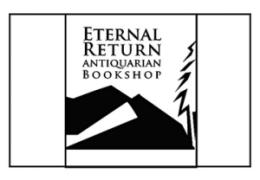Hunter S. Thompson Archive Consisting of 182 Letters to be Auctioned
Los Angeles - An extraordinary collection of 182 letters by Gonzo journalist Hunter S.Thompson will be auctioned by Nate D. Sanders Auctions on September 27, 2018.
The letters begin in 1955 when a 17-year-old Thompson wrote to his Louisville, Kentucky childhood friend Paul Semonin, who was attending Yale University. All but two of the letters in the collection were written to Semonin. The other two items include a telegram from Thompson to author Tom Wolfe and a letter to an unnamed friend.
Thompson’s letters to Semonin span from 1955-1974 and are highly personal, providing a clear look at Thompson’s view of the world. Nearly every sentence in the letters features Thompson’s hallmark Gonzo journalistic style including riveting details about his experience at Slates Hot Springs in Big Sur as well as his time embedded (including the brutal beatings he suffered) with the Hell’s Angels.
Among the highlights of the archive is Thompson’s famous letter written the day of President Kennedy’s assassination. Twenty-five of the letters being auctioned were published in Thompson’s collection, The Proud Highway: The Saga of a Desperate Southern Gentleman 1955-1967. One hundred and twenty six letters were typed and include handwritten notes; all are signed. Many other letters document Thompson’s travels while writing The Rum Diary.
The archive includes letters Thompson wrote while visiting or residing in Colombia, Ecuador, Brazil, Mexico, Aruba, Puerto Rico, New York, California, Colorado and Kentucky, among others.
Commenting on his writer career in a 1965 letter, Thompson penned, “I am not going to be either the Fitzgerald or the Hemingway of this generation…I am going to be the Thompson of this generation…"
In describing the archive, auction owner Nate Sanders commented, “This is a rare, personal, first-hand depiction of Hunter S. Thompson’s life. It is clear in reading these letters that Thompson believed it was imperative to document the turmoil of the 1960’s and share his perspective with his best friend from childhood.”
















